I’d love to connect with you! Sign up for my monthly newsletter, "Garden Bliss & Blunder”
PRUNING ROSES is Easy
- from
Mystery to Mastery
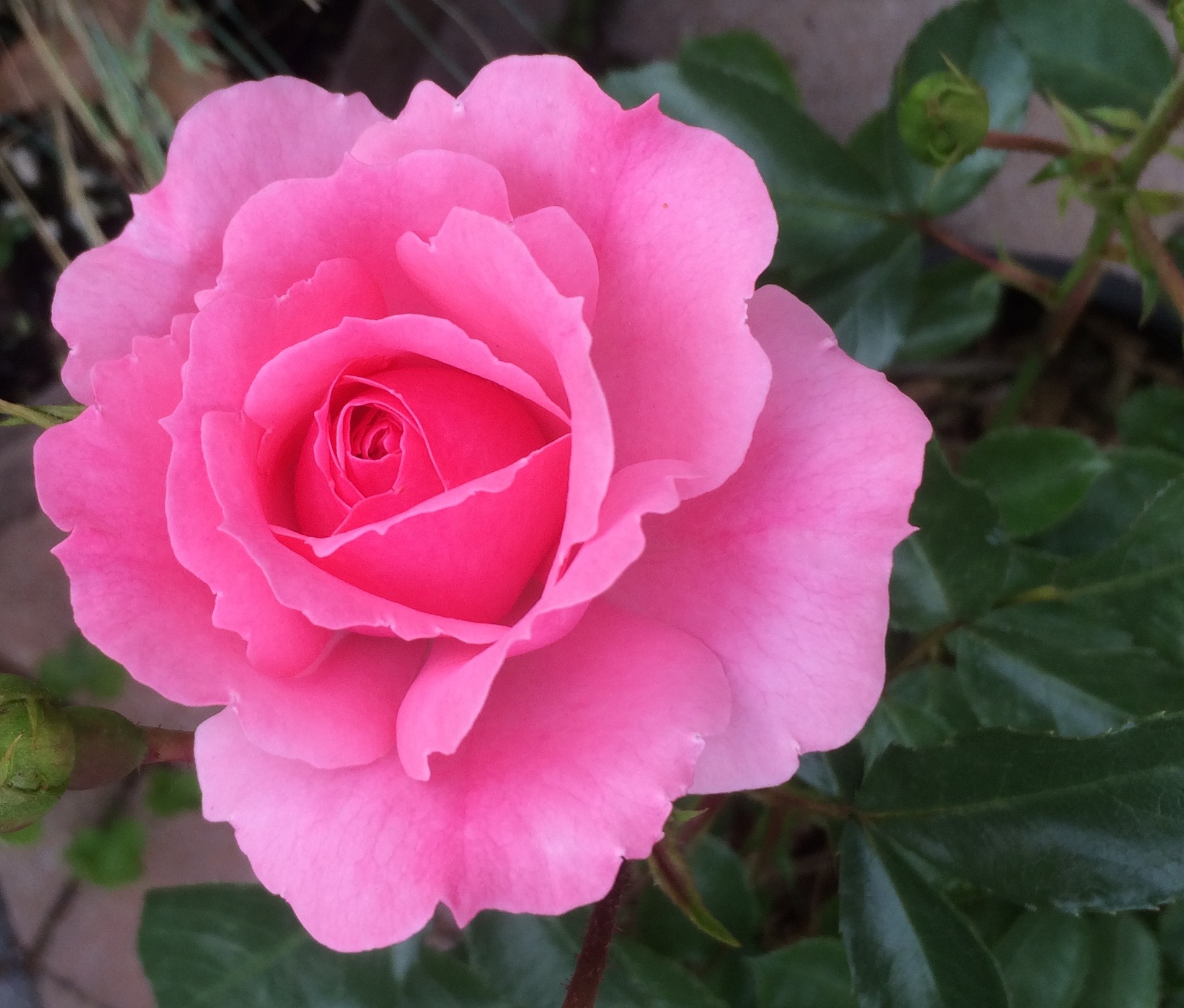
"If you know how it grows, you can prune any rose".
To take the Mystery out of Pruning Roses
you'll need to understand:
- Why and When to Prune Roses
- The Anatomy of a Rose
- Pruning Tools
- How Roses Grow (like a Bush, a Structure, a Climber or Rambler
- How to Prune Roses (the way they grow)
- Pruning Cuts: the Good, the Bad and the Ugly
- Grooming Roses (mid-season)
...and Other Serious Rose Stuff like RRD
Of course I'd like you to understand all the pages I listed above . BUT…I hear you:
You are calling: Help!
"My roses are starting to sprout and they need pruning now. I don't have time to read all that."
YOU’RE IN LUCK:
Until you have time for all the rest, here’s what you can do right now.
1.Wait till the Forsythia blooms (or the buds on the canes begin to swell)
2. Sharpen your pruners (dull pruners tear the canes)
3. Start at the top; work down and take your time
4. Remove just 4 D's - dead, dying, damaged, diseased
5. Cut back just above a little swollen bud
6. Leave the rest of the serious pruning until you read the other pages.
- Your rose will be fine until you do.
SEE BELOW FOR SKETCHES OF PRUNING CUTS
Ready ? Gloves on and watch out for those Rose PRICKLES
START HERE:
REMOVE DEAD and DYING
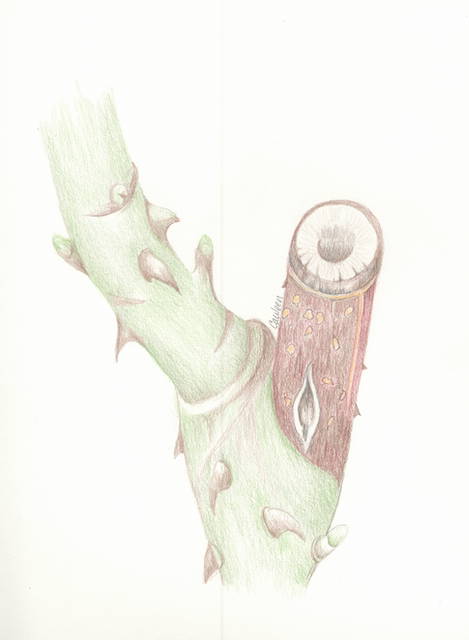
Above: To remove the dead part of this cane; cut below it….which means cutting off the whole piece growing to the left of the dead even though it is still green.… Go back down the cane to a small emerging bud below the brown area(bottom right)… otherwise, the dead will spread down the healthy cane.
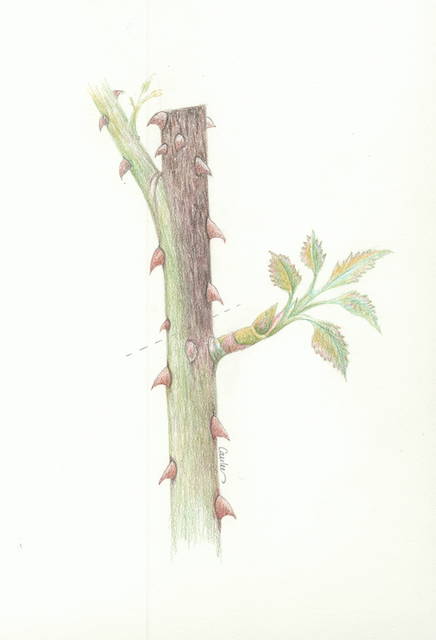
Above: This cane is dying - possibly winter die-back or damaged last season. The brown extends below the green branch on the upper left so cut back just above the new shoot sprouting on the right. In real life, you may decide to cut below that shoot. Main thing is to cut back below the dead to the live part of the cane.
DAMAGED

Above: Cut back this BROKEN cane to either a healthy side shoot, or new bud-eye further down the cane.

Above: DAMAGED canes (caused by a crossing cane rubbing, or electric clippers (please - don't) or even critters snacking; cut below the damage to a healthy emerging bud-eye.
DISEASED or DYING
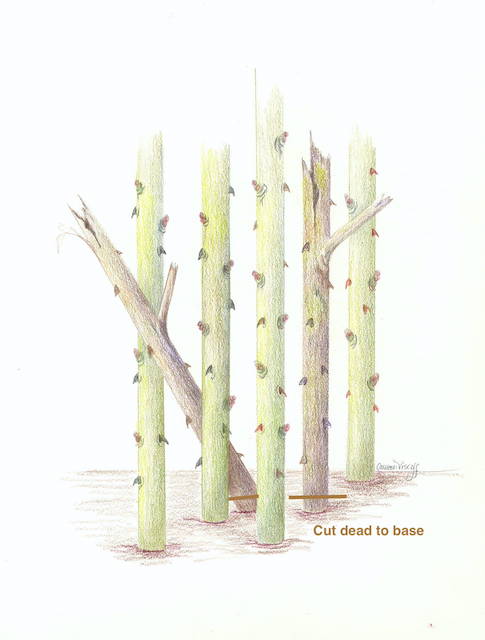
Above: Cut dead canes all the way back to the base or ground level.
Start from the top and as you cut down a cane, watch for darkening in the centre (pith) : cut back until the pith is green, not beige or brown.
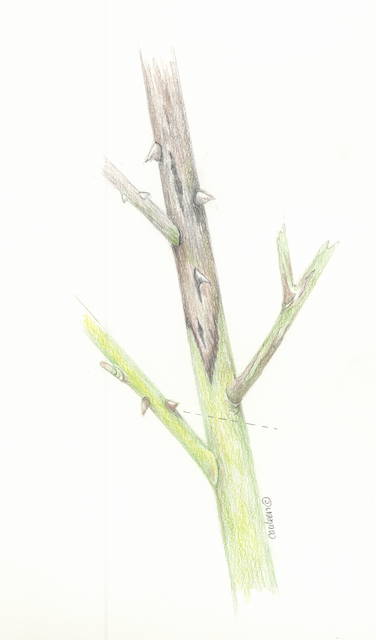
Above: This cane is dying and if the darkened is not cut away, it will continue down the cane. Prune back down to the healthy part of the cane.
CAUTION - RRD
There is more about Rose Rosette Disease (RRD) in the link below - but if you see this as you prune, you CANNOT prune RRD out of a rose… it is a fatal disease caused by a tiny mite, no bigger than a bit of dust and spreads by wind, birds, your sleeve or your boots.
You may read about someone who has cut back the offending cane(s) and states the rose lived.... but in reality, those mites that spread RRD are airborne and although the rose in question may seem to recover, other roses growing nearby may be affected. Safest for all - dig up the entire rose.
If you do see this - as in the sketch below - read the page on it, report it and dig it out - but most of all do not put in your compost.
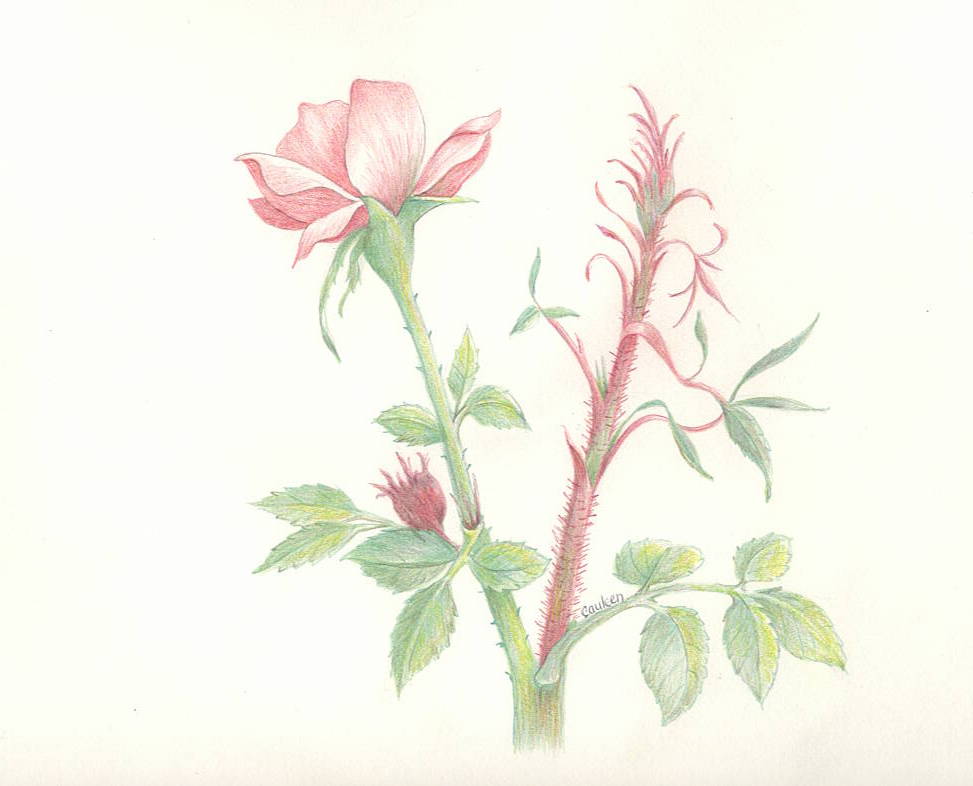
Above: RRD shown growing outward on the right and the small dark red bud emerging from the cane on the left - just below a healthy-looking bloom.
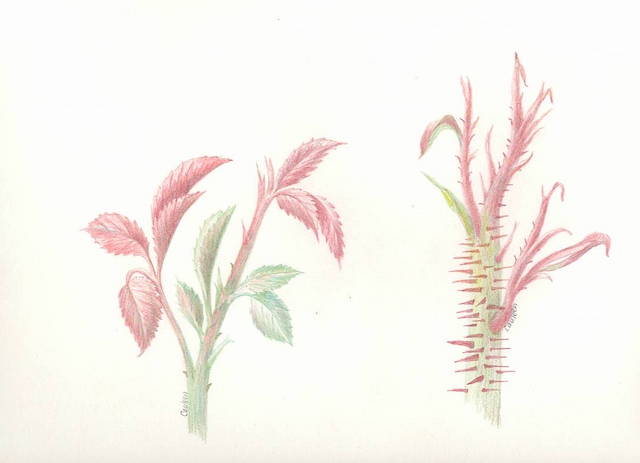
Above: Healthy new growth on the left: Rose Rosette on the right

Above: this new red cane is a healthy 'basal-break" and not RRD
Before you learn how to prune roses that grow like a bush, you need to see HOW ROSES GROW... they grow differently and want to be pruned differently... then come back here...
HOW TO PRUNE ROSES
THAT GROW LIKE A BUSH:
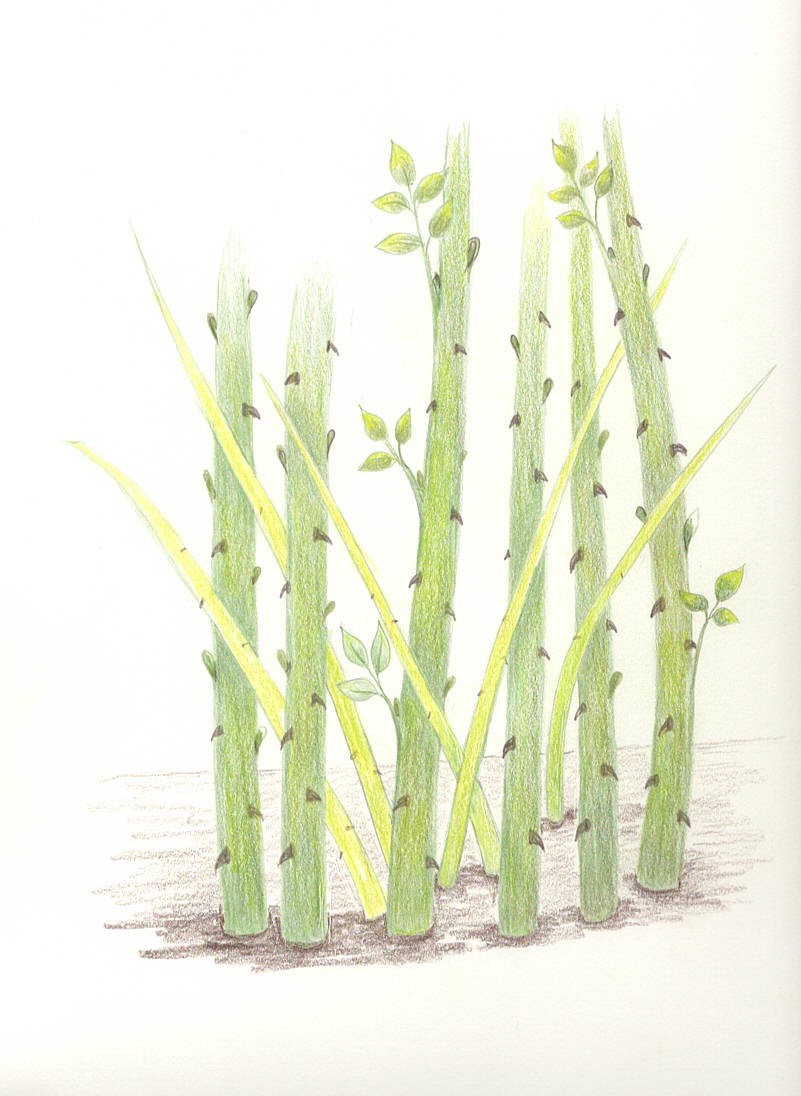
Roses that grow LIKE A BUSH send up new canes from the base each season and into the centre of the bush.
Follow a cane from the base to the tip: it doesn't fork or create a branch and blooms at the tip of a long stem... (However, if you've pruned your rose over a couple of seasons, it may have created some forking as a result - but look at the bottom - easier to tell.
Those new canes are weaker their first season and can often flop outward . See below for how to deal with that.
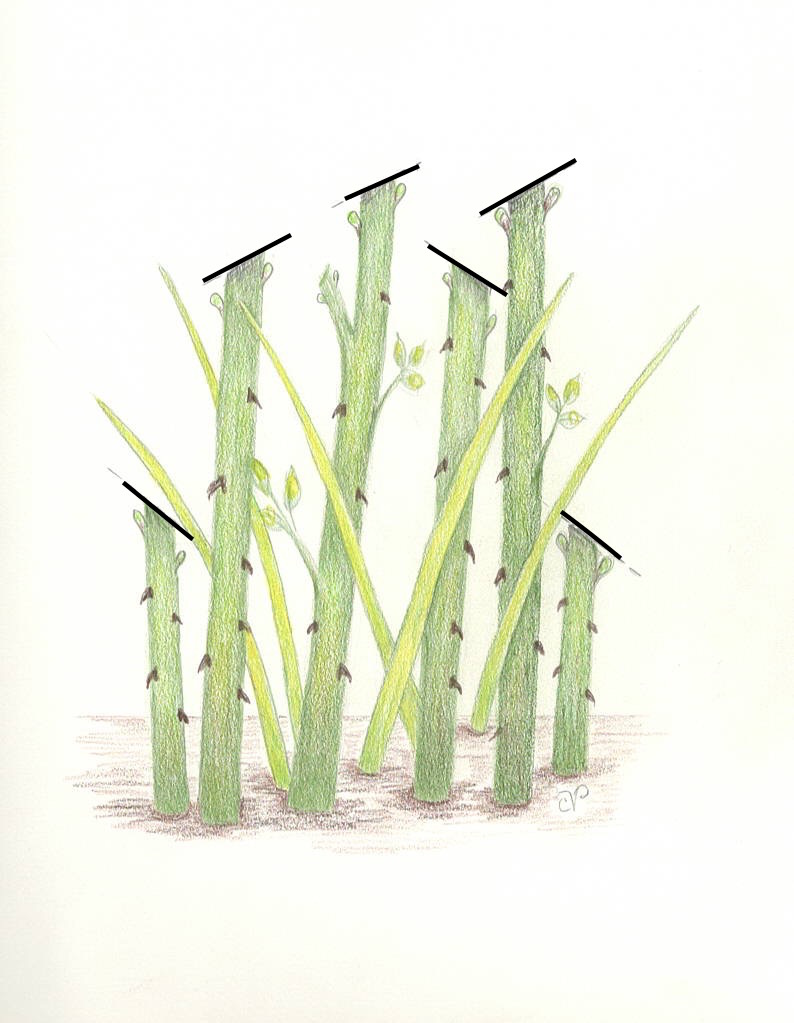
Prune First : the 4 D's: Dead, Diseased, Damaged, Dying
Then prune several of the outer canes a little shorter so the new growth will sprout and support those new weaker canes by forming a sort of cage around the outside.
(don’t do this all in one season as it stresses the rose: take a couple)
Remove little twiggy bits. (the little stems that are too weak to support a bloom and get tangled in the middle.
Prune the rose to the height and width you like or suits your garden - but only take about a third of either height or width..
Many of the newer "modern garden roses" are pretty disease resistant so it is not the same need to clear out the centre.
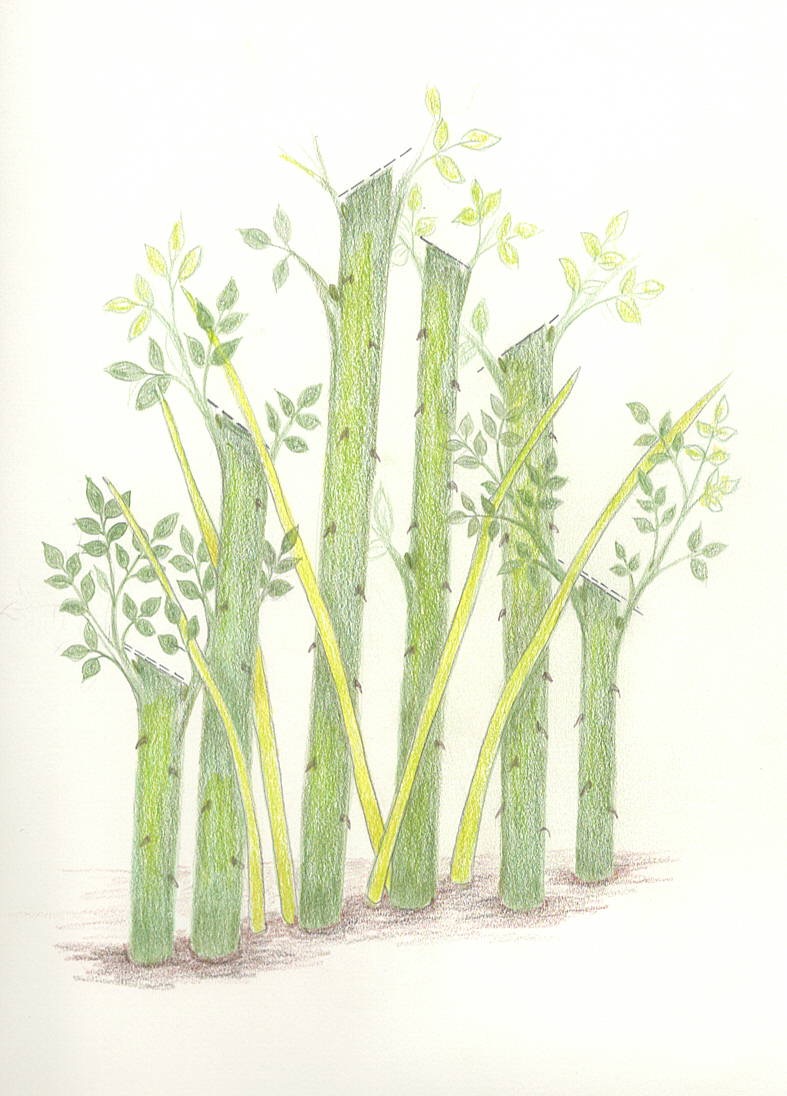
New outside shoots will support young canes.
HOW TO PRUNE ROSES
THAT GROW
LIKE A STRUCTURE
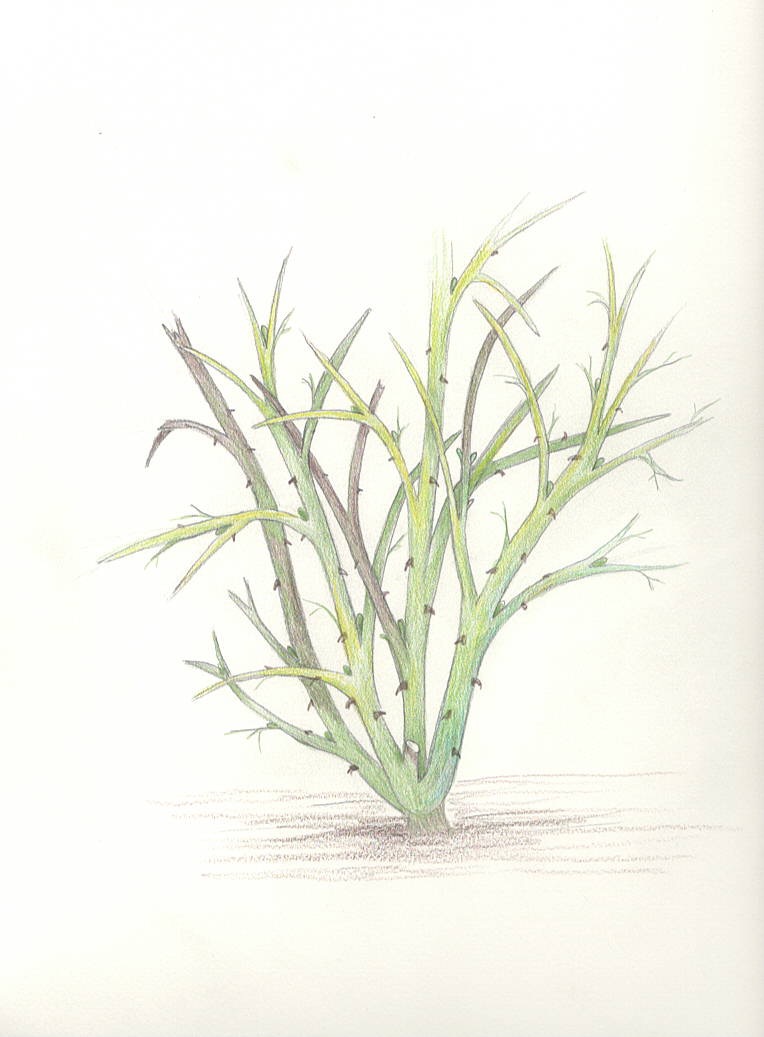
THIS ROSE BUILDS A STRUCTURE with canes that begin growing from the base or "trunk" of the rose (on both own-root and grafted roses). The canes then start branching out like fingers, adding layers each season. This rose needs time to build its structure and blooms all over with shorter canes or stems.
These roses grow and branch; grow and branch - like most Floribundas which have multiple flowers on each cane.
These roses tend to be larger and can take 2, 3 or even 4 years to build the structure - so let it grow 4 or 5 feet high before you do any major pruning. Some folks suggest cutting roses back to close to the ground but if you do that with this rose, it will weaken it and then take another 2 to 3 seasons to rebuild.
So think before you prune this rose.
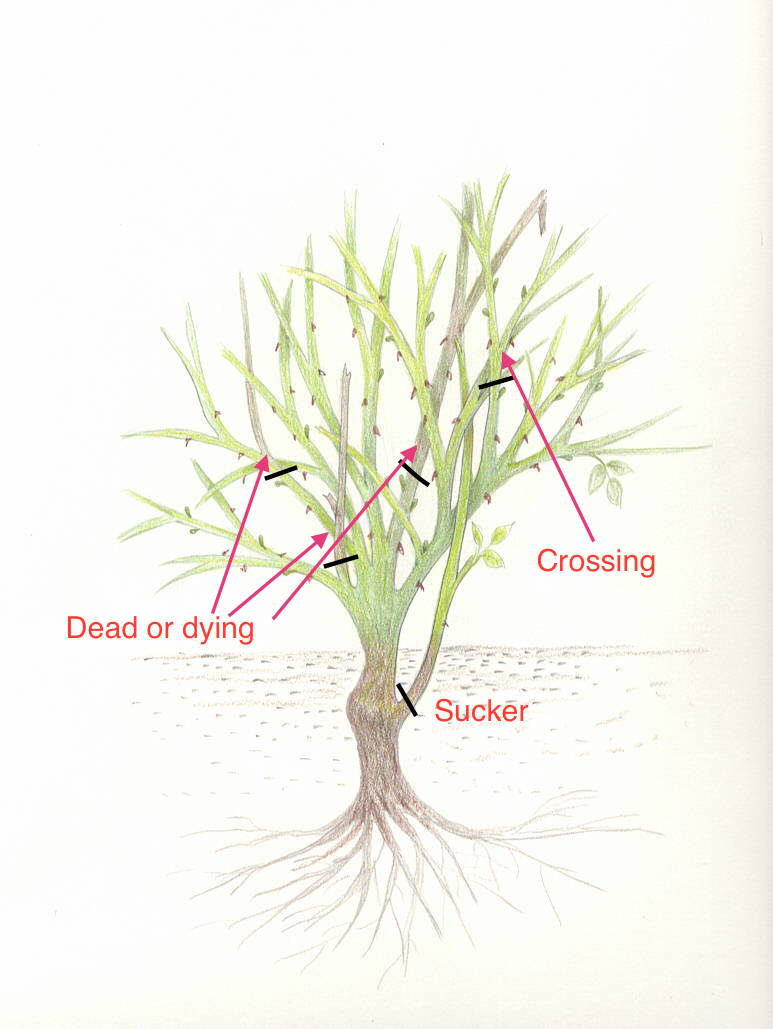
HOW TO PRUNE A STRUCTURE :
Start with the 4 D’s and take only a third off the top if needed.
Prune any canes that cross or rub against one another and cut those back to a healthy bud-eye (or a 5 leaflet if it has leaves).
Because of the way it builds its structure, these canes tend to be self-supporting. So there is need to create an outer cage (as in the bush rose).
Give it some shape by removing any pieces that stick out and grab your sweater or small children... or those that take your eye away from a pleasant shape.
Groom all season... shape and deadhead.
Less is more.
HOW TO PRUNE CLIMBING ROSES
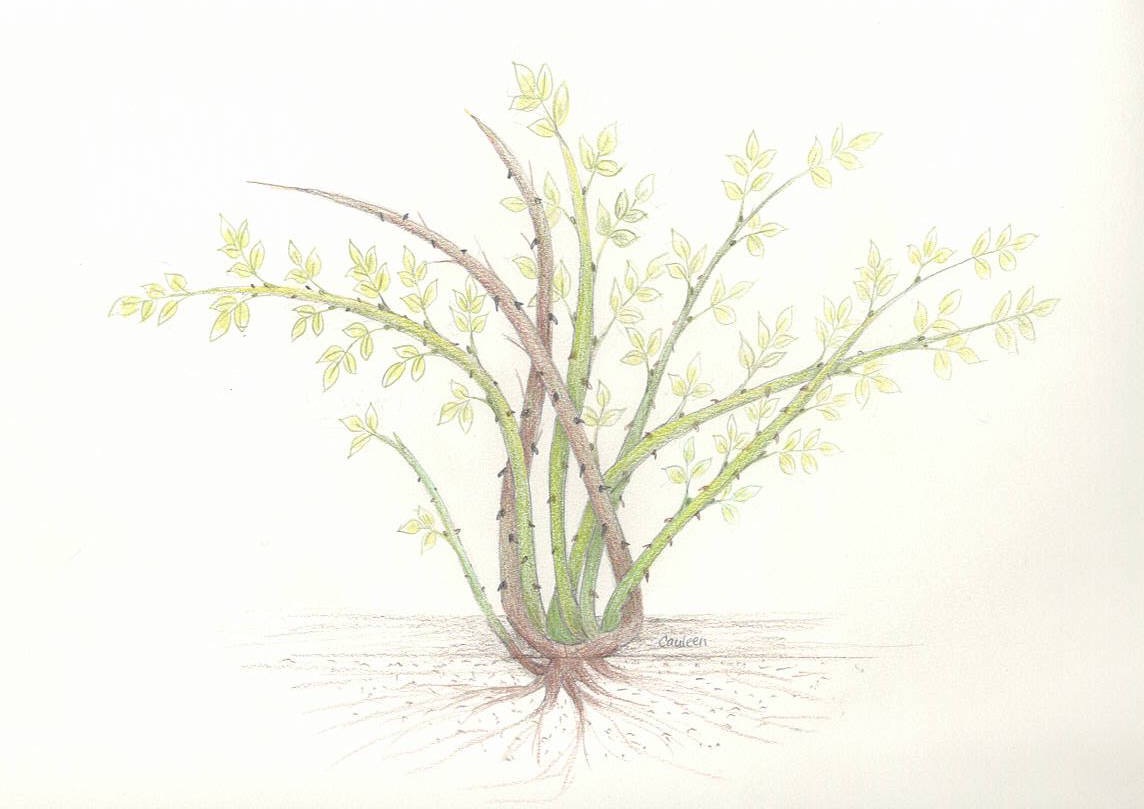
Climbers have two types of canes:
MAIN canes and
LATERAL (horizontal) canes.
The long main canes that grow from its base need to reach their height first (sometimes a full season) perhaps 10 to 20 feet.
Then the side or lateral canes will sprout.
When you train those long main canes as horizontal as possible, they will sprout side shoots called laterals where the blooms will be.
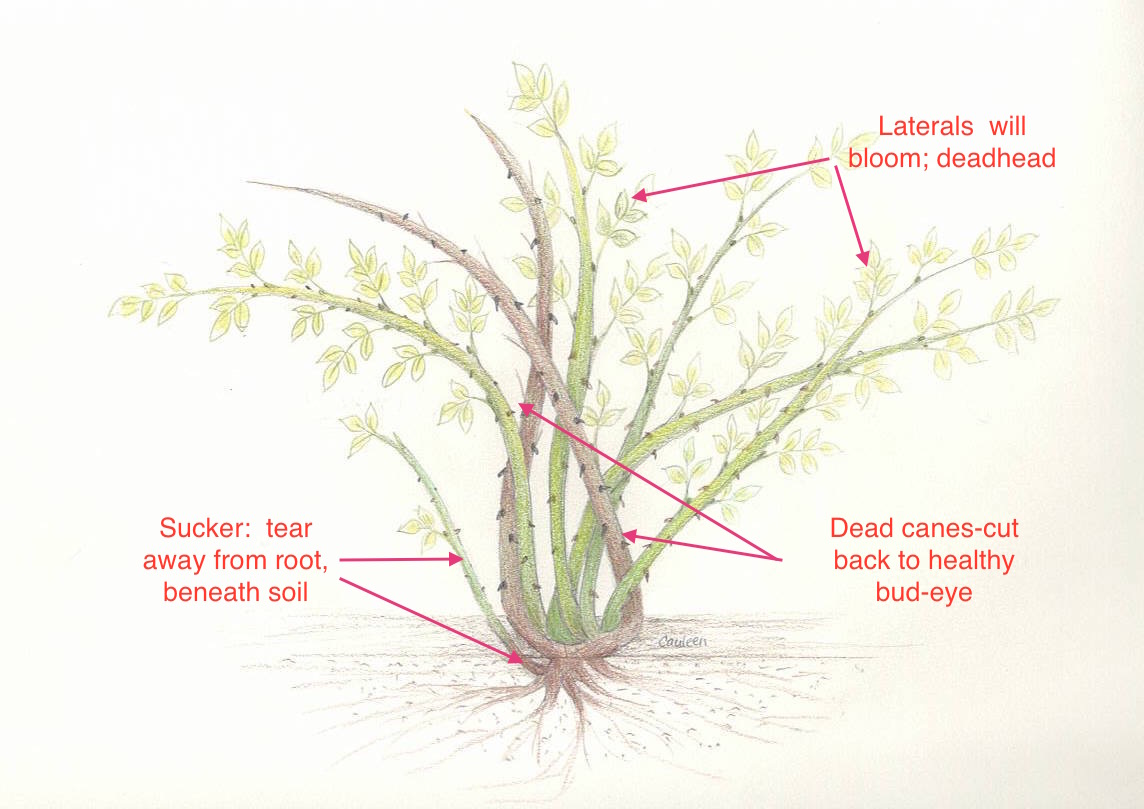
HOW TO PRUNE A CLIMBING ROSE:
Climbing roses are pruned differently but you'll still always start with the 4 D’s before you do anything else.
Don't prune out those main (vertical) canes because they support the climber - however, if one is dead and before you remove it, find a strong lateral and train it as upright as possible to make a new vertical main cane.
If you prune the main canes to the base, it takes too much energy for the rose to start over from the ground up, often delaying overall growth and blooms for a few seasons..
However, if for some reason you need to cut back one of the main canes due to damage or perhaps broken in storm, try not to cut it back more than 1/3 and give it time to recover from the stress.
Remove crossing canes that rub against another, back to a healthy bud.
Pruning cuts should always go back to strong and healthy canes.
Train the lateral canes sideways as close to a 45 degree angle as possible and tie them gently to a support or trellis.
Remember, blooms grow from the laterals (or horizontals).
Groom all season - deadhead about 6 to 12 inches above the lateral cane.
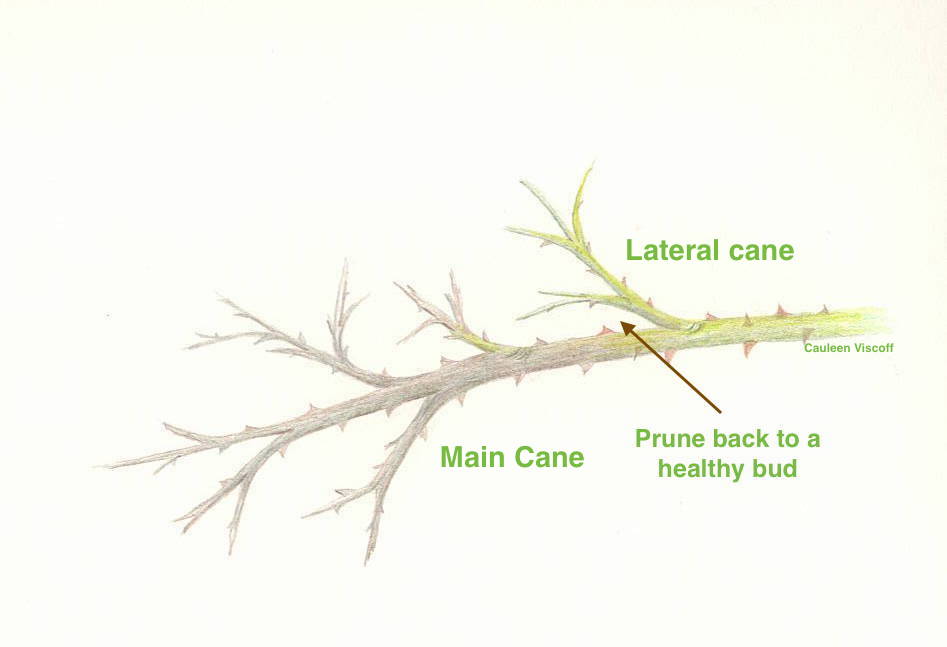

Congratulations ! You did it...


